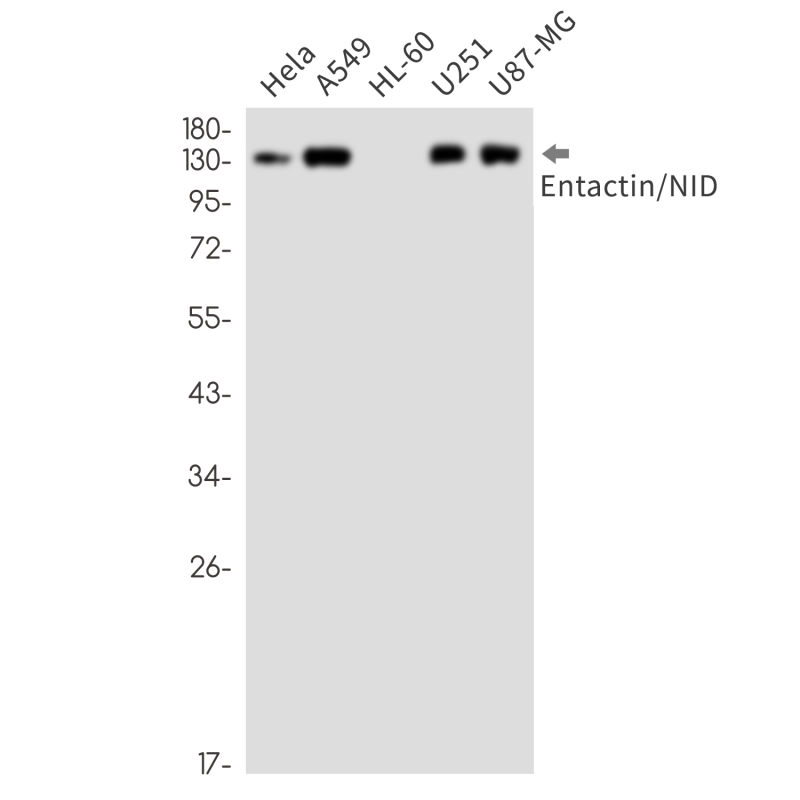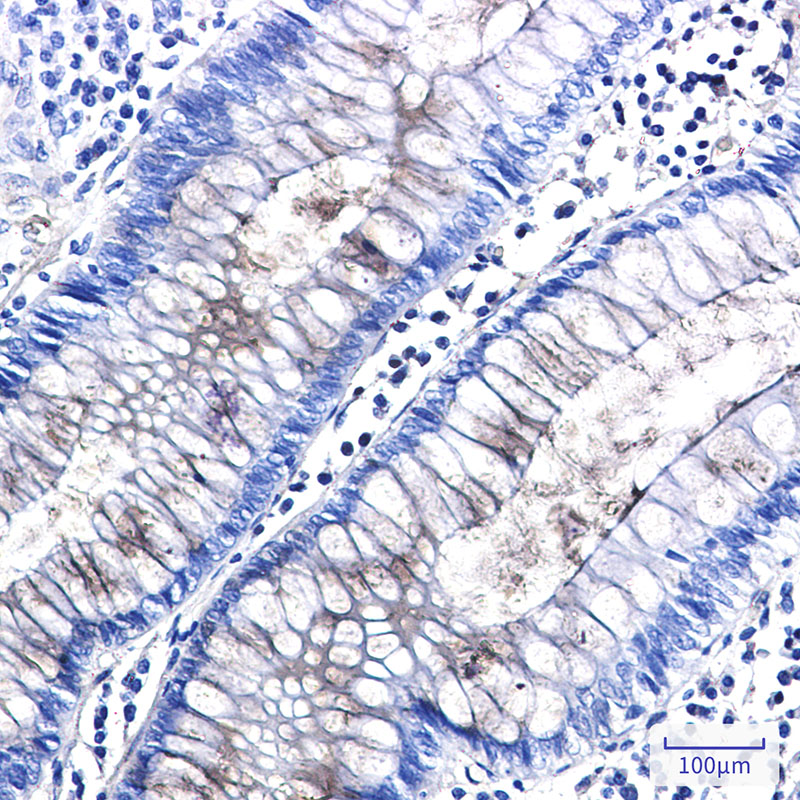

| WB | 1/500-1/1000 | Human,Mouse,Rat |
| IF | 咨询技术 | Human,Mouse,Rat |
| IHC | 1/50-1/100 | Human,Mouse,Rat |
| ICC | 技术咨询 | Human,Mouse,Rat |
| FCM | 咨询技术 | Human,Mouse,Rat |
| Elisa | 咨询技术 | Human,Mouse,Rat |
| Aliases | Enactin; Ent; Entactin 1; Entactin; NID 1; NID; Nid1; Nidogen 1; Nidogen |
| Entrez GeneID | 4811 |
| WB Predicted band size | Calculated MW: 136 kDa; Observed MW: 136 kDa |
| Host/Isotype | Rabbit IgG |
| Antibody Type | Primary antibody |
| Storage | Store at 4°C short term. Aliquot and store at -20°C long term. Avoid freeze/thaw cycles. |
| Species Reactivity | Human |
| Immunogen | Recombinant protein of human Entactin/NID |
| Formulation | Purified antibody in TBS with 0.05% sodium azide,0.05%BSA and 50% glycerol. |
+ +
以下是关于Entactin(Nidogen)抗体的3篇参考文献示例,信息基于领域内经典研究整理:
---
1. **文献名称**: "Entactin: A novel basal lamina-associated sulfated glycoprotein"
**作者**: Carlin, B., et al.
**摘要**: 该研究首次描述了Entactin(Nidogen-1)作为基底膜中硫酸化糖蛋白的分子特性,并开发了特异性抗体用于定位分析,证实其与层粘连蛋白(laminin)的相互作用。
2. **文献名称**: "Monoclonal antibodies against entactin: Demonstration of its dual localization to basement membranes and matrix vesicles"
**作者**: Ekblom, P., et al.
**摘要**: 通过单克隆抗体技术,揭示了Entactin在肾脏和胚胎组织基底膜及基质囊泡中的分布,证明其在不同细胞外基质微环境中的多功能性。
3. **文献名称**: "Nidogen-1 and nidogen-2 in human diseases: An emerging perspective"
**作者**: Miosge, N., et al.
**摘要**: 综述了Nidogen-1/Entactin抗体在疾病模型中的应用,包括其在癌症转移和肾脏纤维化中的表达变化,强调抗体工具在病理机制研究中的价值。
---
注:以上为示例性内容,实际文献需通过学术数据库(如PubMed)检索确认。建议使用关键词“Entactin/Nidogen antibody”或结合具体研究目的筛选最新文献。
Entactin antibodies are immunological tools used to detect and study entactin, a key component of the extracellular matrix (ECM). Entactin, also known as nidogen, is a sulfated glycoprotein that plays a structural and functional role in maintaining ECM integrity by bridging laminin networks and collagen IV. It is critical for basement membrane assembly, tissue organization, and cellular signaling. Two isoforms, entactin-1 and entactin-2. exist in vertebrates, with entactin-1 being the most studied.
Entactin antibodies are typically produced in hosts like rabbits or mice using purified entactin or synthetic peptides as immunogens. These antibodies are widely used in techniques such as Western blotting, immunohistochemistry (IHC), and immunofluorescence (IF) to localize entactin in tissues or cell cultures. They aid in researching ECM dynamics in developmental biology, tissue repair, and diseases like fibrosis, cancer metastasis, and kidney disorders, where basement membrane disruption is implicated.
Commercially available entactin antibodies may target specific domains (e.g., G3 or rod regions) or post-translational modifications. Validation includes reactivity checks across species (human, mouse, rat) and applications. Researchers must consider cross-reactivity with entactin-2 or other ECM proteins. These antibodies are essential for elucidating entactin's role in ECM remodeling and its interactions with integrins, growth factors, and other matrix molecules, offering insights into therapeutic strategies for ECM-related pathologies.
×